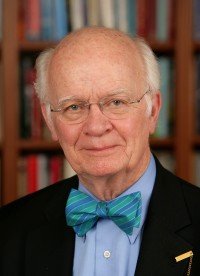A good value
In his influential Theory of Justice John Rawls speaks of a "difference principle," a way of legitimizing social differences. He imagines people in "an original position" in which they do not know their ultimate social positions. Precisely because they do not know what their own social place is likely to be, their self-interest would encourage them to adopt fair social and political principles—principles of equal liberty and equal opportunity. They would allow for differences—inequalities of possessions and opportunities—only to the degree that these differences would allow a typical person in the worst-off group to prosper.
There's room for a "difference principle" in my life—otherwise I would not have allowed myself the security of tenure, the relative security of a pension plan and upper-middle-class status. To the nation's and world's poor, I am really different, and they know it and I'd better. From the vantage point of my status, the "better-off" attract little envy and less notice from me.
So when I read Newsweek's excerpts from David A. Kaplan's The Silicon Boys I am not outraged by its descriptions of Woodside, California, "the symbol of an era's accumulation of ineffable wealth, the Beverly Hills of high tech." The average home cost is $1,514,065. OK. I have a nice 100-year-old house. Woodsiders can buy ostrich salami at $18 a pound. OK. I like ostrich, but don't need salami. They can buy a tiny $1,500 bottle of balsamic vinegar infused with truffle. OK; I favor balsamic vinegar, but can do without the truffle. "The meek didn't inherit the earth—the geeks did," notices Kaplan. OK. The poor never did stand a chance, except in the kingdom of God. Gordon Moore, cofounder of Intel, is worth $10 billion, and that passes for normal in Woodside. OK. As long as he tithes.
Which raises the question: How do the Woodsiders of America pass on the values they obtained while advancing in geekhood? In respect to wealth, if you can't take it with you, can you at least teach the principles that got you to where you are?
Yes. But you start early. Don't wait until the kids line up for M.B.A.s or at least good B.A.s from Stanford. They need nurture early. Kaplan tells us that training occurs at junior high in a curriculum on "How to Be a Millionaire." Every year the first math assignment in seventh grade has a child spending a hypothetical $1 million and learning the way around a spreadsheet. Rules? You can make only 15 purchases, and can spend only $700,000 on a house and buy two cars in this math-and-values game. Could the child cheat and give most to charity? Not on your life! We are talking principles here. "No more than $25,000 can go to charity."
Now we have learned the secret of success. Let's see: $25,000 is 2.5 percent of a million. That would be one-fourth of a tithe; not very high among those on the short end of the "difference principle," but, according to regularly published statistics, quite high for the super rich. Kaplan: "Woodside is teaching its kids, the sons and daughters of the nation's leading entrepreneurs and venture capitalists, how to be smart shoppers!" And typical donors?





